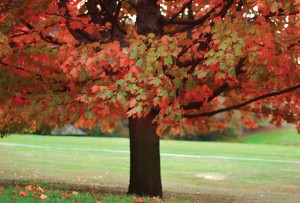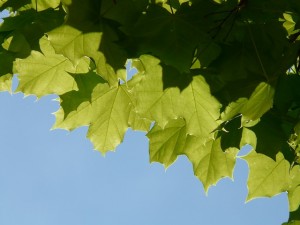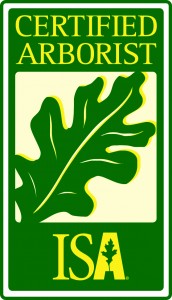 What’s wrong with my maple tree’s leaves?
What’s wrong with my maple tree’s leaves?
Sometimes being arborists is kind of like being a detective. We get calls from property owners both residential and commercial, trying to figure out what is wrong with their tree. Some of these clues lead to easy diagnoses. Others can be puzzling and give us a good amount of work to solve the case. Often the question “What’s wrong with my maple tree?” has a complicated answer.
What to look for?
Maple trees are common throughout our area, and they have been widely used in landscaping both residential and commercial properties. We use Maples a lot in landscape design as well as we often see a multitude of problems with existing Maples. Some of them don’t warrant concern but others do. Some problems can be solved by pruning, or a tree and shrub care program, but others may have no viable solution and may just lead to increasing decline of the tree. In any case, if you are looking at your Maple tree and realizing something just doesn’t look right, these are some of the things to look for:
Small leaf size
When leaves start to appear to be getting smaller each year on a plant, it’s a good sign that there is a problem. This could be a result of a disease issue, nutritional deficiency, or the impact of environmental changes or stresses in the past year or so near the tree. Girdling roots can also cause problems as they restrict the vascular flow of water and nutrients up to the leaves. This could be one answer to the question “What’s wrong with my maple tree?”
Poor leaf color
If leaves are losing their vibrant, green color during the year, even turning yellow, it could be a sign that your Maple tree isn’t being sufficiently nourished. In some cases, this issue can be corrected by taking a soil test for your tree in the root zone and adding the necessary elements to correct the soil pH and to raise levels of certain materials that are below optimum in the soil. In some cases, certain insect or mite problems can also discolor leaf tissue. These infestations can often be addressed with tree spraying of a labeled material.
Spots or growths on leaves
There is a whole host of fungi and phenomenon that can cause strange growths on leaves. Some of these pose minimal health concerns to trees and can even just happen on an isolated year as a cosmetic defect. However, some of these issues may be detrimental to the health of your tree, especially on a chronic basis. Some of these fungi can be reduced by performing preventative disease control spraying or injections. Most of these treatments should occur prior or during leaf emergence, and should be performed each year for protection.
Early leaf-drop
Leaves are supposed to drop in fall, not the end of summer. If your tree seems to be changing color or dropping its leaves earlier than it should it is a tell-tale sign that it is under stress. This could be from root issues, drought stress, excessive moisture, or an internal decay problem.
Dead limbs or thinning crown
If your Maple tree seems to be losing life to certain branches or seems to be thinning out each year dropping lots of leaves, this is a warning sign. It may mean your tree is in advanced states of decline. This could be from a long history of all sorts of stresses, but can also be the result of girdling roots. In some cases, removing girdling roots and addressing other health concerns can slow the decline of the tree. Most likely this will not cause a rapid transformation of the tree. Sloughing bark that breaks off and reveals dead limbs underneath is often a sign that decay has been happening for quite some time. These should be evaluated to see if tree pruning or tree removal is recommended.
Over-abundance of fruit production
Fruit production on trees is affected by multiple factors, especially weather. Some years the conditions are ideal, causing a big crop of those “whirly-bird” seeds to be falling from your tree. It could be that they clung to the tree for as long as possible. And then, on the first windy day, they were all dislodged. However, stress on a tree can also cause an over-abundance of fruit production in some cases. This may be yet another answer to the question “What’s wrong with my maple tree?”
Spotted Lanternfly
If you have a maple on your property, you could have damage from the Spotted Lanternfly. The Spotted Lanternfly is an invasive pest from Southeast Asia. These pests prefer maple trees in our area, but will feed on other landscape plants, too. The tree could be in decline due to heavy feeding from the Spotted Lanternfly. If you’re unfamiliar with them, you can read more about them here.
 Multiple Factors
Multiple Factors
Tree decline and death is often the result of multiple factors. Stresses such as drought, excessive moisture, girdling roots, improper pruning, insect and mite damage, and disease can all contribute to a tree’s decline. Ignoring or not noticing those issues for years is bad news for a tree.
The best way to keep a tree healthy is to address these issues regularly throughout its life. Waiting too long means some problems will be irreversible. When you plant trees, be sure to use a landscape designer that will make sure your trees are good selections for the site and properly planted.
 Start caring for your tree at a young age with both periodic pruning of young trees as well as addressing them with a plant health care program to prevent problems. Using a company that employs numerous Certified Arborists is a good idea as these individuals often spot the early warning signs of these issues and can recommend treatments that may positively impact your Maple tree and others.
Start caring for your tree at a young age with both periodic pruning of young trees as well as addressing them with a plant health care program to prevent problems. Using a company that employs numerous Certified Arborists is a good idea as these individuals often spot the early warning signs of these issues and can recommend treatments that may positively impact your Maple tree and others.
Here to help
If you are struggling to answer the question “What’s wrong with my maple tree?” and you’re seeking a diagnosis of a problem, we would be happy to assess your tree. We can communicate with you about what may be done to handle the issues that plaguing your tree.

